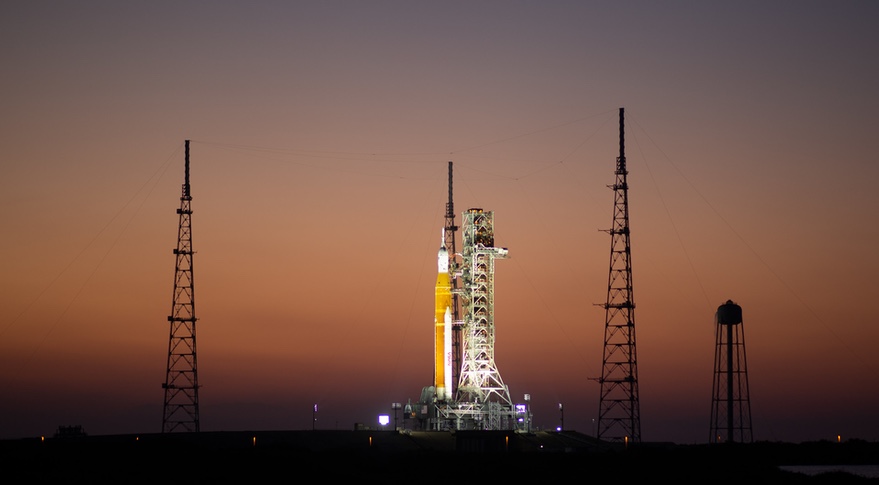WASHINGTON — NASA says it could attempt another countdown rehearsal of the Space Launch System as soon as April 21 depending on how quickly they can fix a hydrogen leak that stopped the previous test.
At an April 15 briefing, SLS managers said they were beginning work to track down the source of the leak detected shortly after starting to load liquid hydrogen into the rocket’s core stage during the April 14 attempt. It was the first time that controllers had reached that stage of the countdown after technical problems halted two previous attempts before liquid hydrogen could start loading.
The leak is on the ground side of an umbilical plate on the mobile launcher’s tail service mast, and not on the SLS itself. “The good news is that there’s only a few things in that purge enclosure and there’s a couple of discrete penetrations that could be the culprit,” said Charlie Blackwell-Thompson, Artemis launch director.
Those represent what Mike Sarafin, NASA Artemis mission manager, called “low-hanging fruit” for fixing the problem. If the leak is quickly identified and fixed, NASA could attempt another wet dress rehearsal as soon as April 21, pending availability of the range. Agency officials said at another briefing later in the day that the Crew-4 commercial crew launch to the International Space Station, scheduled for April 23, would take precedence over SLS testing.
The path forward is less clear, though, if the leak can’t be quickly fixed at the pad. “There are some more invasive options that require getting further into the hardware and potentially having to get into some extended troubleshooting,” he said, suggesting some of those options might require work done back in the Vehicle Assembly Building rather than on the pad.
Sarafin said engineers also had to consider environmental issues of having the vehicle on the pad for an extended period, such as wind stresses on the towering vehicle. “The longer we stay at the pad, the more we stress the vehicle,” he explained. “Every time the wind blows against it, it creates a bending moment and, over time, that adds up.”
“We haven’t fully outlined all the options right now,” he said. “The one that we’re pursuing with great vigor is the low-hanging fruit option and we’ll let the team come up with some other options.”
Blackwell-Thompson suggested one option would be to do another tanking test once the vehicle returns to the pad for the Artemis 1 launch. “You could certainly look at your schedule risk for launch countdown and make a decision whether or not you wanted to do a tanking prior to a launch countdown,” she said. In that scenario, the rocket would go through a tanking test and practice countdown and, if all went well, “some days later decide to go launch.”
Despite not getting through the countdown test in three attempts to date, and uncertainty about when the hydrogen leak will be fixed, Blackwell-Thompson said she was not particularly concerned. She noted there were five or six tanking tests before the first launch of the shuttle more than four decades ago. “Putting it into context, I would say we’re within family of our experience in the past for first-time ops,” she said.
